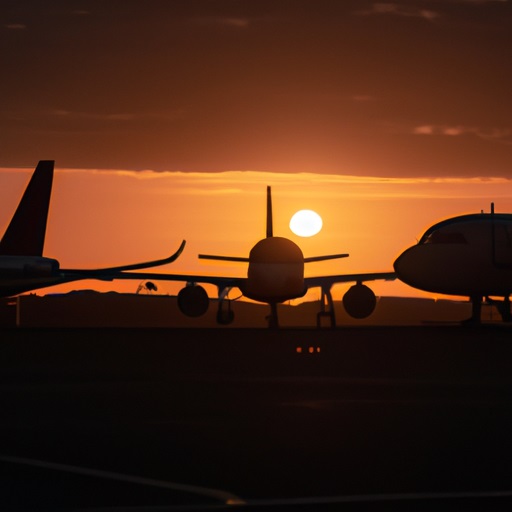
A Better Approach to Airline Costs
The airline industry is a fiercely competitive landscape where companies constantly strive to offer the best service while maintaining profitability. One of the critical aspects of achieving this balance is efficient cost management.
This article explores a better approach to airline costs, focusing on cost-reduction strategies, innovative business models, and the use of technology to improve operational efficiency.
Optimizing fuel efficiency
Fuel is one of the most significant expenses for airlines, accounting for up to 30% of operating costs. By optimizing fuel efficiency, airlines can significantly reduce their operating expenses. Some strategies for improving fuel efficiency include:
Aircraft selection: Modern aircraft, such as the Airbus A350 and Boeing 787 Dreamliner, are designed with fuel efficiency in mind. These aircraft use lightweight materials, advanced aerodynamics, and energy-efficient engines to reduce fuel consumption.
Operational improvements: Airlines can also optimize fuel consumption through operational measures, such as reducing aircraft weight, optimizing flight routes, and implementing fuel-saving procedures during taxiing, takeoff, and landing.
Alternative fuels: The adoption of sustainable aviation fuels (SAF) can help reduce the industry’s carbon footprint and potentially lower fuel costs. Airlines like United, KLM, and Alaska Airlines have started using SAF, which can be blended with traditional jet fuel.
Streamlining labor costs
Labor is another significant expense for airlines, often representing up to 35% of operating costs. Some strategies for streamlining labor costs include:
Cross-utilization: By cross-training employees to perform multiple roles, airlines can reduce their need for additional staff. For example, Southwest Airlines is known for its cross-utilization strategy, where employees are trained to handle various tasks, such as ticketing, boarding, and baggage handling.
Automation: Implementing self-service technologies, such as self-check-in kiosks and automated bag drops, can reduce the need for personnel while also improving the passenger experience.
Outsourcing: Airlines can also reduce labor costs by outsourcing non-core operations, such as catering, maintenance, and ground handling. Low-cost carriers (LCCs) like Ryanair and EasyJet have successfully implemented this strategy.
Revamping revenue management
Revenue management is essential for maximizing profitability. Airlines can adopt the following strategies to improve revenue management:
Dynamic pricing: Dynamic pricing enables airlines to adjust fares based on factors such as demand, competition, and booking patterns. By using data analytics and machine learning algorithms, airlines can more accurately forecast demand and set optimal prices.
Ancillary revenue: Airlines can increase revenue by offering ancillary services, such as baggage fees, seat selection fees, and in-flight food and beverage sales. For example, LCCs like Spirit Airlines and Allegiant Air have successfully used ancillary revenue to offset lower ticket prices.
Personalization: Offering personalized services and targeted promotions can help airlines increase customer loyalty and revenue. Delta Air Lines, for instance, uses customer data to offer personalized flight and service recommendations.
Embracing cost-efficient business models
Cost-efficient business models have helped airlines reduce costs and increase profitability. Some examples include:
Low-cost carriers (LCCs): LCCs like Ryanair, EasyJet, and Southwest Airlines have successfully disrupted the airline industry by offering no-frills service at lower prices. These carriers focus on cost reduction through strategies such as point-to-point flights, high aircraft utilization, and simplified fare structures.
Long-haul, low-cost carriers (LH-LCCs): Airlines like Norwegian Air and AirAsia X have expanded the low-cost model to long-haul routes. These carriers offer budget-friendly options for international travel by using fuel-efficient aircraft, optimizing seat configurations, and charging for ancillary services.
Ultra-low-cost carriers (ULCCs): ULCCs, such as Spirit Airlines and Frontier Airlines, take the low-cost model to an extreme by offering the lowest possible base fares while charging for various additional services. This approach allows these carriers to maintain profitability even when offering extremely low ticket prices.
Implementing cutting-edge technology
The adoption of new technologies can help airlines reduce costs, streamline operations, and enhance the customer experience. Some examples include:
Big data and artificial intelligence (AI): By leveraging big data and AI, airlines can optimize flight routes, predict maintenance needs, and improve revenue management. For example, Qantas uses AI to optimize flight routes, reducing fuel consumption and improving on-time performance.
Internet of Things (IoT) and predictive maintenance: IoT technology enables airlines to monitor aircraft systems in real-time, allowing for predictive maintenance and reducing unplanned downtime. Major carriers like Delta Air Lines and Lufthansa have adopted IoT to improve their maintenance efficiency.
Biometric technology: Implementing biometric technology, such as facial recognition, can streamline the boarding process and enhance security. Airlines like British Airways and Delta Air Lines have started using biometric boarding systems at select airports.
Conclusion
A better approach to airline costs involves a combination of strategies, including optimizing fuel efficiency, streamlining labor costs, revamping revenue management, embracing innovative business models, and implementing cutting-edge technology.
By adopting these measures, airlines can reduce their operating expenses, improve profitability, and enhance the overall customer experience. The real-world examples highlighted in this article demonstrate the effectiveness of these strategies in the increasingly competitive airline industry.






